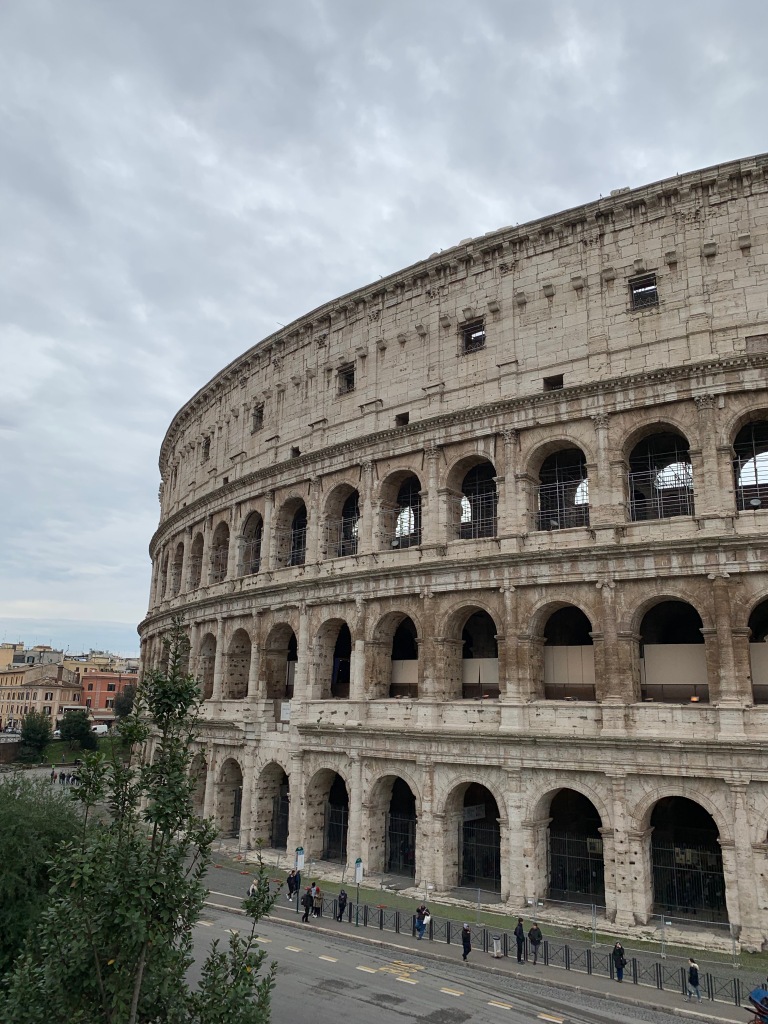Our next stop was Rome. To get there from our Venice apartment we first took the vaporetto (waterbus) to the train station. We left at rush hour, and the vaporettos coming down the canal were jammed full of commuters. We had what amounts to a reverse commute, and weren’t so cramped.
The train from Venice to Rome passed through Bologna, where in retrospect I should have leapt off to make an impromptu circuit of the nearby Lamborghini and Ferrari museums. Or go for a test drive. Guess I’ll have to come back.
Our train then passed through tunnel after long tunnel under the Appenines to get to Florence, where it disgorged a giant mob of tourists. Originally we had thought about stopping in Florence ourselves. The boys have a limited tolerance for art museums though, so ultimately we decided to save it for Rome and the Vatican.
Our apartment in Rome was just off the Piazza del Popolo, a lively square that was once the northern gate to the city. Close to the metro, it made an excellent base for exploring the city. We didn’t see everything in Rome, but managed a fair bit during our week there.
Early on we visited the Pantheon, the Roman temple with the famous concrete dome. The dome is the largest unreinforced concrete dome in the world, a title it’s held for nearly 2000 years! We also saw the large, ornate Trevi Fountain. Despite the rain that day, both sites were well-attended by tourists.



We took a guided tour of the Colosseum, which we learned is properly called the Flavian Amphitheater. The name ‘Colosseum’ comes from the Colossus of Nero – the 100’ tall statue of Emperor Nero that stood nearby for several hundred years before disappearing. The amphitheater itself is a marvel. It’s huge. Not quite football stadium-huge, but nonetheless big enough to hold more than 50,000 people in 3 tiers of seating. And despite the efforts of 2000 years of earthquakes, looters, and pollution much of it is still standing! From a viewpoint on one of the upper tiers it was easy to imagine gladiators dueling in the arena while vendors hawked their wares in the stands and the emperor sat in his arena-side seat, ready to pass judgement on the fight.


The Colosseum got us thinking about gladiators. To get a taste of gladiatorial combat, we signed the boys up for Gladiator School. Since it’s off-season, we were the only people in the group and wound up with a private class. Upon arrival Jack decided to be a moody teenager and sit it out, so I took his place. (He really missed out here – it’s not every day you get a parent-sanctioned chance to fight with your brother!)
I quickly learned I was too old to be a gladiator: our first activity was calisthenics. Oof. Once warmed up, we learned how to wield the gladius, the short sword that gave its name to the sport. After some practice on both offense and defense, we had a tournament. Nate quickly figured out he had a distinct advantage: he can bend down a lot farther than I can, so he went for the legs. He emerged undefeated from our 3-round tournament and was crowned Invictus the Invincible by our instructor. I was advised that I have reasonably good form on attack but should nonetheless keep my day job.

For the boys, the highlight of our time in Rome was probably a cooking class hosted by a local chef. In her home’s kitchen she taught us how to make gelato, fettuccine, and ravioli – all from scratch! The food was delicious, and we enjoyed good conversation with the Australian couple who were in the class with us. We are excited to make our own pasta when we get home!

One afternoon we visited the ruins of the Roman Forum – the beating heart of Ancient Rome. The Forum is just up the street from the Colosseum, and was far smaller than I envisioned. I expected grand boulevards with stately temples set on large plots of land. Nope! The Via Sacra is the main street, and is quite narrow. There definitely wasn’t enough room to double-park your chariot. The temples and other buildings were very close to each other, and their towering columns must have been both awe-inspiring and a bit claustrophobic to the Romans who lived during their heyday.




We spent much of another day at the Vatican, marveling at the incredible collections of art and architecture. Since the Vatican is a separate country, I’ll cover it in another post!

3 replies on “When in Rome…”
What a magnificent adventure! Wow! Great images, too! Thanks for sharing!
LikeLike
Bologna ?
Ducati !
Florence (Firenza) … when the boys learn about the Medici, they’ll regret not having been (and it’s where Whitney did her study abroad)
Roma… it was too “urban” for us
LikeLike
All the more reason to go back!
LikeLike